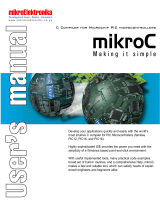
www.digi.com
3
Development Process Overview
Before you integrate your pages, preview them. Place them in a single
directory on your disk, and select
Open File to preview the pages.
For pages with forms, check the HTML pages to make sure the form actions
(URLs) for each page are specified and unique, and that the form item tags
have unique names. Also, make sure that the form method (Get or POST) is the
one you want to use:
POST method. Passes the form arguments in the HTTP request body; they
are invisible to the user.
Get method. Appends the form arguments to the URL; they are visible.
You might want to use the Get method for repeated (or bookmarked) queries,
but usually, you want the forms to be submitted with the POST method.
Step 3. Identify the variables to be accessed
After you design and code your HTML pages, the key engineering task is to
identify the device variables used in these pages. Each HTML page to be
displayed can contain dynamic data retrieved from the device. Examples of
dynamic data display are the status of ports on an Ethernet switch or the level
of toner remaining in a laser printer. In addition, the device can be controlled
by using HTML forms, which pass data from the browser to the device.
Examples of controlling a device are specifying the initial configuration of a
router or changing the temperature setting of a building HVAC system.
You need to define access to each variable to be displayed or written. The
RomPager engine uses a variable access structure for each variable. The
variable access structure contains pointers to the direct memory location of
the variable or to an access routine, as well as type information about the
variable.
The access routines used to read/write the variables are referred to as
Get/Set
routines throughout this guide because of their resemblance to SNMP
Get/Set
calls. These calls can be the same
Get/Set routines used by SNMP if the device
is SNMP manageable; they also can be new calls written just to support the
Web-based management of the device. The variable access structures provide
the link between the HTML pages and forms and the
Get/Set routines.




















